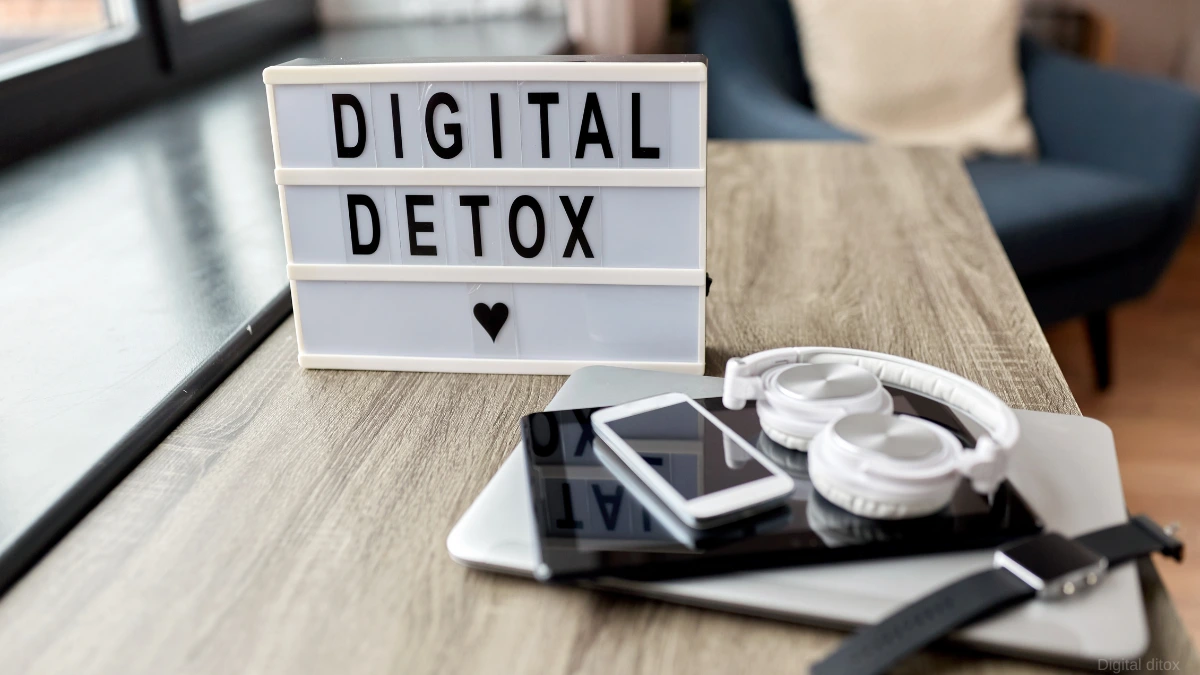In this fast-moving digital era, where screens dominate our daily lives, the concept of a digital detox has risen in popularity as a way to reclaim balance, focus, and connection in an increasingly connected world. The constant barrage of notifications, the irresistible lure of social media, and the ever-present glow of screens can all have a negative impact on our mental and physical health.

In this article, we’ll go over a step-by-step guide to starting a digital detox and the transformative benefits it can provide.
1. Examine Your Current Digital Habits:
The road to a digital detox starts with self-awareness. Take a look at your current digital habits. How much time do you spend on your electronic devices? Which apps do you spend the most time with on your screen? Are there online games you are addicted to? Understanding your habits is the first step in making intentional changes.
2. Set Clear Goals:
Establish specific goals for your digital detox. Having clear objectives will guide your detox experience, whether it’s to reduce screen time, improve focus and productivity, or foster more meaningful connections in the real world. Make a list of your goal to help you stay focused.
3. Choose a Digital Detox Duration:
Decide on the duration of your digital detox. This could be a day, a weekend, or even a week, depending on your comfort level and the amount of detox experience you want. Setting a specific timeframe creates a structured approach to the detox.
4. Notify Contacts:
Inform your friends, family, and colleagues about your digital detox. Clearly communicate the duration and purpose of your detox, and set expectations regarding your availability during this period. This step helps manage external expectations and minimizes the chances of feeling obligated to respond to digital communications.
5. Create a To-Do List:
Plan alternative activities to fill the time you would typically spend on digital devices. Create a to-do list that includes both useful tasks and recreational activities. This could range from reading a book, painting, DIYing, Finding a hobby or spending quality time with loved ones.
6. Designate Tech-Free Zones:
Identify specific areas in your home where digital devices are not allowed. The bedroom is a common choice, as avoiding screens before bedtime can improve sleep quality. Additionally, consider designating the dining area as a tech-free zone to promote mindful eating and conversation.
7. Unplug Devices:
Before the detox begins, take the proactive step of unplugging your devices. Turn off the notifications, put your devices on silent, or, if possible, turn them off entirely and put it inside your cupboard. This not only reduces the temptation to check your devices but also creates a physical and mental separation from the digital world.
8. Explore Offline Hobbies:
Rediscover activities that don’t involve screens. Whether it’s drawing, writing, playing a musical instrument, or experimenting with a new recipe, engaging in offline hobbies can be a fulfilling way to spend your time and rediscover your passions.
9. Connect with Nature:
Spend time outdoors during your digital detox. Whether it’s a leisurely walk in the park, a hike in nature, or simply sitting on the grass in your garden, the fresh air and natural surroundings can provide a refreshing break from the digital realm.
10. Read a Physical Book:
Choose a book you’ve been wanting to read and savor the experience of flipping through physical pages. Reading a physical book not only reduces screen time but also allows for a more immersive and focused reading experience.
11. Practice Mindfulness:
Incorporate mindfulness activities into your digital detox. Whether it’s meditation, deep breathing exercises, or yoga, practicing mindfulness helps you stay present in the moment and reduces the urge to constantly check your devices.
12. Socialize Face-to-Face:
Plan social activities that involve in-person interactions. Meeting friends for coffee, having a family game night, or attending a local event are excellent ways to connect with others without the distraction of screens. A face to face interaction always results in the the social well being of a person.
13. Journal Your Experience:
Keep a journal during your digital detox to document your feelings, challenges, and any positive changes you notice. Reflecting on your experience through journaling provides valuable insights and helps you track your progress throughout the detox.
14. Reflect on Your Digital Habits:
Use the time during your digital detox to reflect on your relationship with technology. Identify habits that you want to change or modify for a healthier digital lifestyle. Consider what activities add value to your life and which ones might be worth minimizing.
15. Gradual Reintegration:
As the digital detox period comes to an end, reintegrate digital devices gradually. Reflect on what you’ve learned during the detox and make intentional decisions about how you want to use technology moving forward. Implement changes based on your goals and newfound insights.
In conclusion, a digital detox is not about completely abandoning technology but rather finding a balance that aligns with your well-being. By following this step-by-step guide, you can reclaim control over your digital habits, foster genuine connections, and create a more mindful and fulfilling lifestyle in our digitally dominated world.